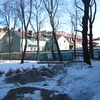Amber country out of amber?
Sources report that Lithuania the self-called amber country imports most of its amber from neighboring Kalliningrad, Russia, rather than obtaining the "Lithuanian gold from domestic sources.
According to Albertas Petkevičius, leader of Palanga Amber Craftsmen's Guild, the amount that is collected on Lithuanian shores is not enough to meet the demand from Palanga craftsmen alone. He admits to have used only used one or two kilos of Lithuanian amber last year for his jewelry.
There are no data about how much amber is collected in Lithuania's territory, so the country needs to depend on what is simply found ashore, yet the Baltic Sea is not as generous as it has been 20 years ago. In the meantime, the interest in amber is growing, especially with the Chinese.
The biggest available resource of amber is found in Yantarny mine, Sambian Peninsula in Russian Kaliningrad), but it is also running dry. Lithuania itself does not excavate amber, though some works have been conducted in mid-19th century, when the land was part of East Prussia. It was then that company Stantien und Becker dug up, they say, about 2,250 tons of amber and that the famous human-shaped amber sculptures were found, called Juodkrantė treasure ever since. Of this treasure only 18 sculptures remain, currently kept in Gttingen University in Germany. Around 400 items vanished during World War Two. The Amber Museum in Palanga now exhibits copies of the sculptures.
The world's biggest piece of amber is held in Germany, in Berlin's Natural History Museum. It is 47 centimetres in length and weighs 9.817 kilograms.
 Who Hit John
Who Hit John





